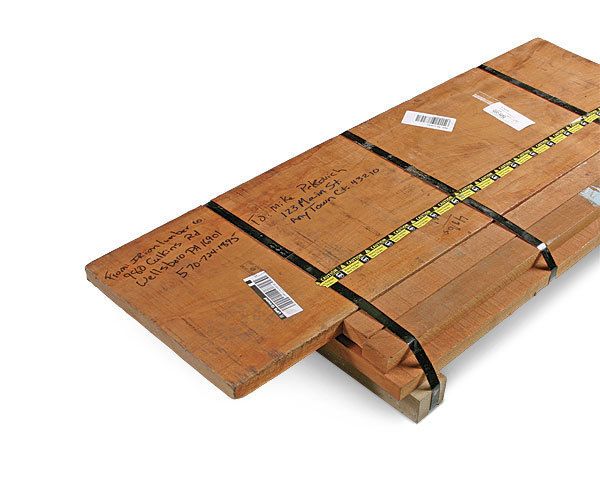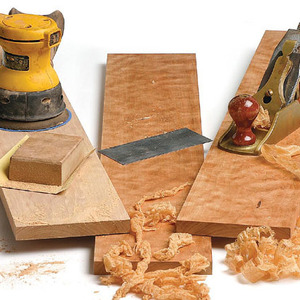10 Tips for Mail-Order Lumber
The Internet has made it easier to find exceptional wood, but you need to be an educated shopper
Synopsis: Before you go out and spend your hard-earned money on a bunch of beautiful-looking boards from an online supplier, there are a few things you should know. The Internet is an effective way to find just the right lumber for your project, as long as you educate yourself and take a few precautions. In addition to talking to a wide range of suppliers, Patrick McCombe asked five of his co-workers to buy wood online to see how their experiences measured up. In the end, they came away with 10 tips that will make your online buying experience a success.
Sooner or later, one of your projects will call for a material that’s not available locally. Whether you need a deeply figured stack of matched boards, an exotic veneer, or an eye-popping slab for a natural-edge table, there’s a supplier somewhere who can help. You can find them by flipping to the back of this magazine or asking friends. The Internet is also an increasingly popular and effective way to find just the right supplier, from small mom-and-pop shops to large wholesalers.
But before you send out a check or offer up your credit-card number, you need a way to tell that the faraway company you found online is reputable and has quality material. To gather some tips and insider advice, I spoke with nearly 50 specialty lumber and veneer suppliers who sell material over the phone and Internet. I asked them about their specialties and how they handle remote transactions. We discussed how the material is shipped and about typical turn-around times. Then, as a test, Fine Woodworking editors placed trial orders with five companies. Just to make sure we didn’t get preferential treatment, we used cell phones to place the orders and had the material delivered to our homes. In the end, we came away with 10 tips to make ordering material over the phone and Internet safer and more successful.
Yew and spalted maple
I was browsing for something out of the ordinary when I found my yew and spalted maple at Exotic Lumber (www.exoticlumberinc .com). The yew is hard and prone to chipping and splitting, but it has fantastic tight grain and warm coloring that had my co-workers doing double-takes, even before I’d applied a finish. Just sanding to 400 grit gave it a terrific, glassy luster. The spalted maple had enough color to make the drawer fronts interesting without being punky or fragile.
Don’t mail-order material you can get locally
Nothing can replace actually looking at and feeling lumber before you buy it, and the shipping costs of online lumber can significantly increase what you pay for small orders. Therefore, it doesn’t make a lot of sense to buy what you can get from your local suppliers. After finding book-matched white oak at Talarico Hardwoods in Mohnton, Pa., for $22 per board foot (with shipping), FWW art director Michael Pekovich decided to use the mail-ordered wood sparingly. “The Web site stated that one of their specialties is quartersawn oak, and they had plenty of stunning pictures to back it up,” he said. “Unfortunately, their price list was equally stunning, with lumber fetching from $10 to $28 per board foot. I decided that I didn’t need exceptional wood for every component of my Arts and Crafts display case (see p. 30). I opted for book-matched, mail-order stock for the top, sides, and drawer fronts, and purchased the remaining material locally.”
From Fine Woodworking #211
For the full article, download the PDF below:
Fine Woodworking Recommended Products

Ridgid R4331 Planer

AnchorSeal Log and Lumber End-Grain Sealer

DeWalt 735X Planer























Log in or create an account to post a comment.
Sign up Log in